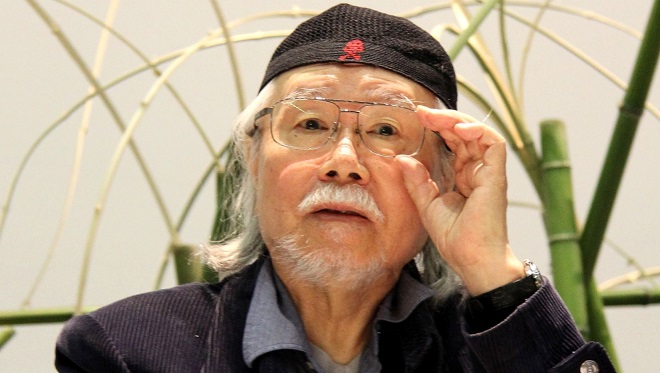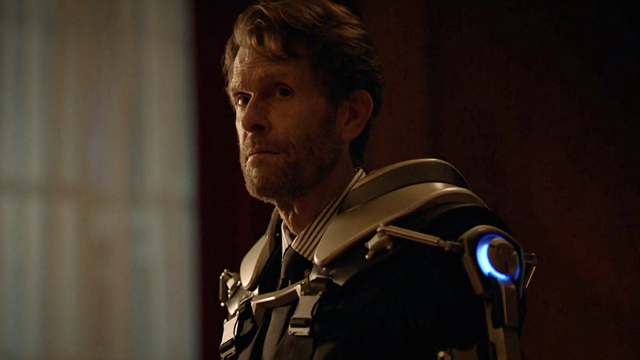Adieu, Leiji Matsumoto

The world has been mourning the losses of too many legends lately, and another has been added to the list: Manga and anime creator Leiji Matsumoto has passed away at 85. His passing will go down as a significant loss for the manga and anime worlds thanks to the similarly legendary and well-known works he created.
Matsumoto was responsible for the fittingly-named “Leijiverse” series of works, many of which took place in the same universe between years and decades apart. Manga and anime such as Captain Harlock, Galaxy Express 999, Queen Millennia, and Space Battleship Yamato were all influential sci-fi and outer space tales for their time, and helped to steer the direction of the space opera genre in both mediums. Those works led to several comparatively minor, though nonetheless important and enjoyable, spinoffs like Queen Emeraldas, Maetel Legend, Arcadia of My Youth, and Cosmo Warrior Zero. Matsumoto only contributed the original story concepts and character designs in several of the spinoff works, especially those beyond the 1980s, but they’re still important considering their origins.

The franchises Matsumoto was most instrumental in creating were, to no surprise, the most popular. Plenty around my age (born in the 1980s) were first exposed to the Leijiverse through the first two Galaxy Express 999 movies, which aired on the Sci-Fi Channel in the 1990s. The Galaxy Express 999 series is told from the viewpoint of Tetsuro Hoshino, who hopes to one day obtain a machine body that will allow him to live forever. He runs into tragic setbacks initially, but obtains new hope upon meeting Maetel, who escorts Tetsuro to and aboard the titular Galaxy Express 999 for their destination in the Andromeda Galaxy. The first movie was an extremely abridged version of the 113-episode TV series, while the second one, Adieu Galaxy Express 999, serves as a sequel to both. The third movie, Galaxy Express 999: Eternal Fantasy, required piracy to watch it until the valiant souls at Discotek Media licensed it.
The Space Battleship Yamato series also aired in select countries outside Japan under the name “Star Blazers.” The original series aired well before the time 1990s kids discovered anime, but shows with good stories always hold up.
Matsumoto’s works included endearing storytelling, gripping writing, and solid character development instrumental in establishing their uniqueness for the 1970s and 1980s time period, alongside a distinguishable character design style that will remain identifiable in perpetuity. He, along with those who worked on the adaptations of his works, made sure that readers and viewers didn’t need to digest every work to understand every facet of their stories. Nothing was lost when, say, Captain Harlock and Queen Emeraldas appear in Galaxy Express 999; but that’s not to say it didn’t help to know who they were before showing up. The cameos, the lesson here goes, shouldn’t get in the way of the independent enjoyment of each story.
It’s a testament to Matsumoto’s popularity outside Japan that he was approached by Daft Punk, of all bands, to create Interstellar 5555: The 5tory of the 5ecret 5tar 5ystem, an animated sci-fi musical film realized thanks to Toei Animation. There are several for whom this is their sole exposure to Matsumoto’s works, though the others haven’t been readily available to watch and purchase at all times.
The sci-fi stories and space operas that Matsumoto helmed and contributed to helped steer future stories and their creators in a unique direction, a feeling that pervades to this day despite it being less prominent. Keep in mind that the Yamato series predated the Star Wars series as an anime inspiration (there weren’t many inspired by Star Trek), as did Galaxy Express 999. I’d argue that not enough works are inspired by them these days, but as mentioned above, his works hold up over time. It’s good, for instance, that the Galaxy Express 999 movies remain easy to find thanks to Discotek, and the series itself has been on Crunchyroll for around a decade. For everything else, you can thank the pirates — though not the space pirates.
Whenever I’ve thought about Matsumoto in recent memory, I’ve drifted to a key quote from an old interview: “We owe a great deal to maniacs, but we can’t make good works if we only pander to them.” Several have taken this to mean that he was talking about the most notorious otaku around before “otaku” became a common word in anime fandom, which could be a correct read. It could have been his way of saying that manga and anime writers, and those in the light novel space, should continue to pursue outward sources for inspiration instead of merely mimicking each other. That is, in fairness, still close to the aforementioned “otaku” read. It’s also something creators still need to hear, though unique works are still made.

Matsumoto suffered from a number of health setbacks in the last few years, including a stay in a hospital in Italy when he visited the country. Rumors suggest that he might have suffered a stroke while there. Despite Matsumoto being in his mid-80s, it was always going to feel that he left us too soon when he passed thanks to his contributions. Fortunately, his works will live on, through preservation or in faithfully remade forms like the current Space Battleship Yamato series. His contributions to anime should never be forgotten.





